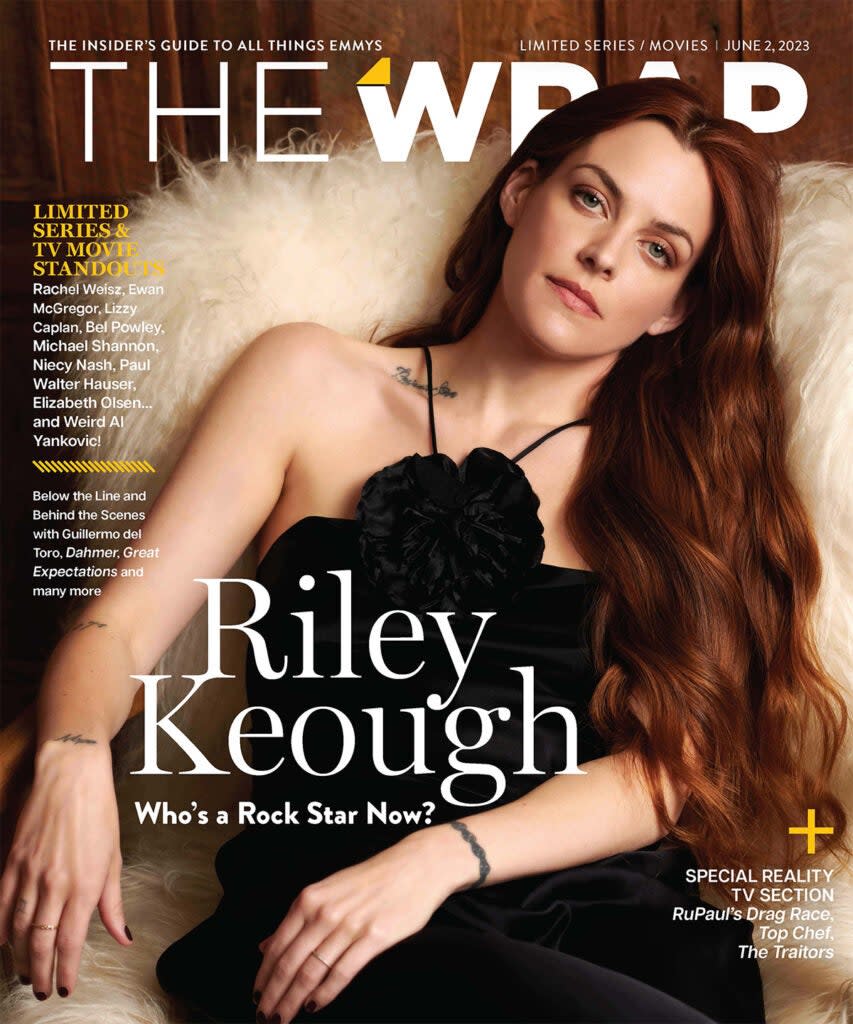How ‘Daisy Jones & the Six’ Created Music Meant to Be ‘the Greatest Songs Ever': ‘It Was Like a Musical, in a Way’
- Oops!Something went wrong.Please try again later.
- Oops!Something went wrong.Please try again later.
- Oops!Something went wrong.Please try again later.
- Oops!Something went wrong.Please try again later.
A version of this story about Scott Neustadter and “Daisy Jones and the Six” first appeared in the Limited Series/Movies issue of TheWrap’s awards magazine.
Scott Neustadter wasn’t born when the rock ‘n’ roll scene depicted in “Daisy Jones & the Six” was taking place in Los Angeles in the late 1960s through the mid ’70s, and neither were most of the cast and creators of the limited series on Amazon’s Prime Video. But Neustadter and his writing partner Michael H. Weber, who’d written “500 Days of Summer,” “The Spectacular Now” and “The Disaster Artist” before they developed “Daisy Jones,” had to become experts in the era they recreated for the series based on Taylor Jenkins Reid’s novel.
Did they get it all right? Of course not. (Read on for some nit-picking from somebody who is old enough to have been there.) But for the most part, “Daisy Jones” feels truer than most attempts to bring back the era — and part of that is the music, which entailed finding current songwriters and musicians to write and play songs that could credibly sound as if they’d come from the Nixon administration.
Before the Writers Guild strike began, Neustadter talked to TheWrap about the music, the job of turning actors like Riley Keough (Daisy Jones) and Sam Claflin (Billy Dunne) into musicians and the curious road from Van Nuys to West Los Angeles.
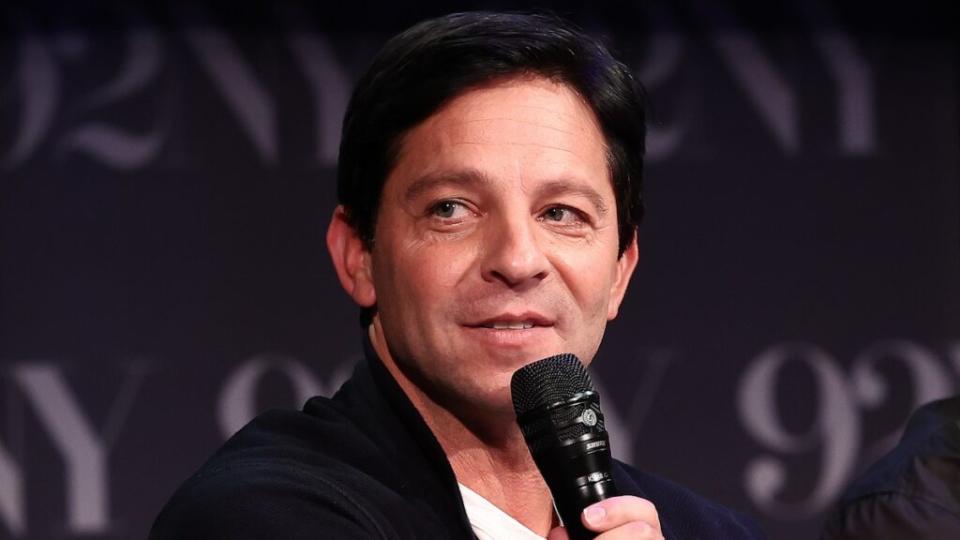
I wrote about music during the era when your show was set, so I’m a very demanding “Daisy Jones” viewer. When the road manager says, “You gotta come to L.A. if you want work with producers like Tom Dowd,” I think, “No, Tom Dowd worked out of New York.” Or when Daisy and Billy drive from the Sound City studio to the Apple Pan for lunch, I think, “A winding mountain road is not the best way to get from Van Nuys to West L.A.”
[Laughs] These are small things we hoped no one would ever pick up. But we knew if they were, that meant enough people were seeing it. If we’re getting called on the route from Van Nuys to the Apple Pan, we’re OK with it.
Also Read:
How Riley Keough Found Joy in ‘Daisy Jones & the Six’ During Her Darkest Times
On the other hand, I watch the club scenes and think, “OK, that looks like the Whiskey. That looks like Filthy McNasty’s.”
There was a lot of research on the part of the whole team. Authenticity was always the North Star for us. Obviously you have to make concessions when you’re writing a speech about, “Go to L.A. and here are all the producers there.” But it was definitely something where we were hoping that musicians and people with knowledge would watch it and go, “That’s actually much better than they usually get.”
Coming up with the songs themselves must have been challenging. In a book, you can describe something as the greatest song in the world and let the reader imagine the rest. On the show, somebody has to write and play it.
The way that the music is referred to in the novel is with all the most intimidating adjectives: classic and timeless… Like these were the greatest songs ever. And we are not songwriters. Let’s find the people who can deliver that for us. We had a very long, exhaustive search for people who were willing to jump in the boat with us and also talented enough to pull it off. And then we got really fortunate. Blake Mills and Tony Berg understood the assignment and were really excited about it. I don’t think they had any idea just how exhaustive it was gonna be, but they really came through for us.
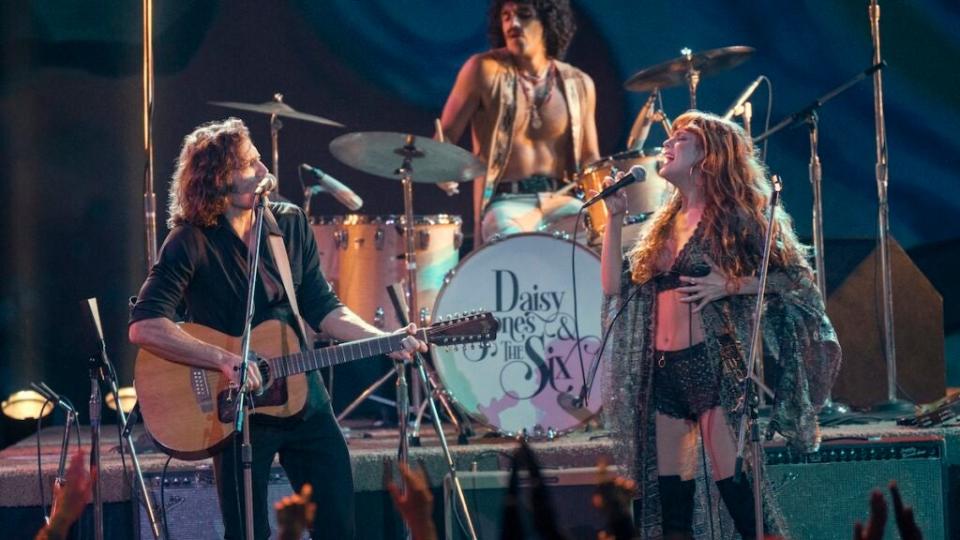
Did you give them rough ideas about the kinds of songs you needed and the function those songs would serve?
Yeah, we talked to them initially about the sound and what we wanted it to feel like. We used a lot of reference points, but we didn’t really want anything to sound like parody or pastiche. It was, “This should be an album. This should be music that would’ve been heard at the time.” But if anybody says, “That sounds too much like something we’ve already heard,” then let’s not use it.
And more specifically, once we talked about the palette, it was like a musical, in a way: “We need a song to use in this scene where this happens, and it was written by him when he was really angry with her. OK, go.” They would submit music, and anytime we got an incoming email from Blake or Tony, everything would stop and we would be so excited to listen to it.
Also Read:
Why ‘Bohemian Rhapsody’ Inspired Weird Al Yankovic to Make His Own Fake Biopic
We worked on it for over two years, as COVID shut us down and we had some time to get it right. It was a long and fascinating process. Blake would usually start with a demo that he would do by himself. And oftentimes, we would all say, “This song’s supposed to be this huge hit, but it doesn’t sound like a hit.” And he’d be like, “It’s a demo.” We had to trust him. It was a good education for us about listening. And we knew the talent involved. Blake was producing a lot of bands at this time, and during the breaks with Marcus Mumford, he’d be like, “Hey, you wanna help me write this Billy Dunne song that I’m doing for this TV show?” And Marcus would be like, “Cool, that sounds like fun.”
Were there particular songs that were tricky to get right?
Yeah, there were a handful that took a little bit of back and forth. I think that the “Honeycomb” song, the big first single that supposedly skyrockets them — we were playing the role of A&R execs, being like, “Eh, I don’t believe this is gonna go viral. I don’t believe this is gonna be the hit that everyone talks about. What else you got?” The version we ended up with was a song that Blake had submitted that had a little bit of a different chorus and was a little slower, and he and Marcus turned up the volume and made it a little bit more of a rave up.
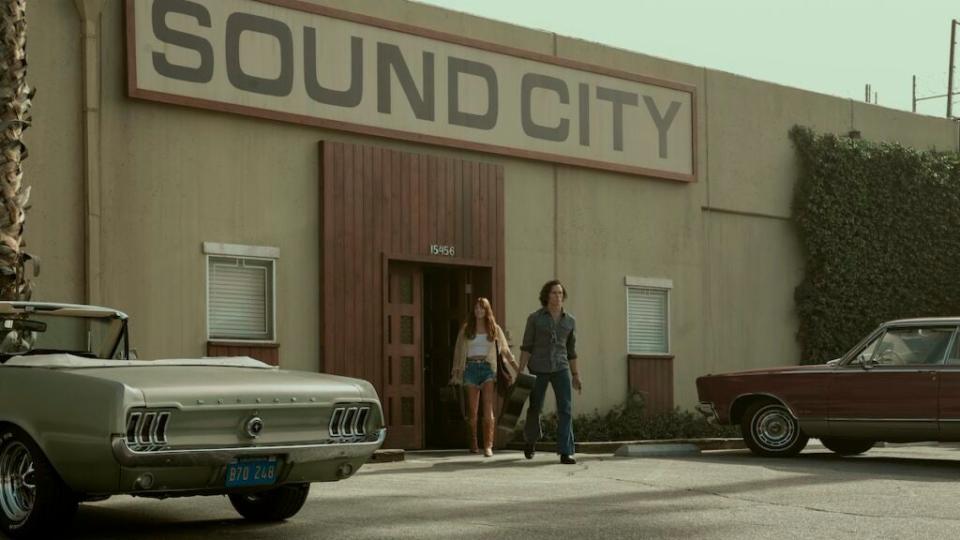
Was it clear that you wouldn’t be using the lyrics that Taylor Jenkins Reid wrote and included in the book?
The truth is that when I got the book, it was still an unpublished manuscript, and the copy that I had didn’t have the lyrics in in it. Some of the lyrics were referenced, but not the addendum at the back of the book that had all the lyrics. I think that was something the publisher did later on. But we knew that when we were working with Blake and Tony and they were working with Marcus Mumford and Phoebe Bridgers and Jackson Browne and some of these other incredible songwriters, they were already handcuffed enough — it had to be a ’70s-sounding song, it had to be played with instruments that would’ve existed then, it had to do this thing in this scene… The last thing we could do is say to them, “And also, here are all the words.”
Taylor was the first person that was like, “I really want to free you from the lyrics [in the book]. I want to hear what they’re gonna come up with.” For us, it was mostly to make sure the narrative function of the song plays exactly the same role as it does in the book. If a lyric is really important to convey that Daisy is furious at Billy, we need that. It’s their version of it. It’s not Taylor’s version of it. But it still hopefully accomplishes the same thing.
Of course, when the first couple of songs were released, you had fans of the book complaining on social media that you changed the lyrics.
Yeah, it was scary. [Laughs] I was like, “Oh no, this show hasn’t come out yet and there’s already backlash! That can’t be good.” But we kept assuring them that though in the book is one thing and in the show it’s something else, it’s really serving the same function. It’s nothing to worry about. I think by now they’re pretty happy.
Also, it’s cool that there’s essentially two different versions of the “Aurora” record that exists, right? One in your head that you can do whatever you want with, and one that you can buy on Amazon.
Also Read:
Why Keri Russell Returned to TV With ‘The Diplomat’
As you were prepping the songs, you also had to prepare the actors to either play them or credibly look like they’re playing them, right?
That’s right. Everyone went to what we called “band camp” at Sound City. It was going to be three weeks of very intensive learning the songs, practicing your instruments for hours at a time, having a movement coach teach you how to embody rock stardom on a stage… But COVID happened, and it ended up being 18 months of that. They would do guitar practice on Zoom with their guitar tech. They’d have singing lessons on Zoom. They would just practice being a band on Zoom. And to their credit, they used COVID to immerse themselves in what being in a band would be like. So by the time we were able to film 18 months later, they were a unit — they had all the inside jokes, they had all the camaraderie that we would have had to fake if we had gone in April of 2020.
Riley had famously not sung before this, even though her grandfather basically invented the job of rock star.
She said to us, “I can’t sing. I have no musical abilities.” We sent her to Sound City so Blake and Tony could see what we were working with. And Tony called afterwards and he was like, “It’s obviously not polished. But you don’t want that in rock ‘n’ roll. The timbre and the unique quality is what’s gonna set it apart.” And he was like, “We could totally work with this.” So that was a big relief for us.
And then, you know, Will Harrison had been in a band in college. Josh Whitehouse plays the guitar, so we felt like he could move to bass. Suki [Waterhouse] had a lot of learning to do — she was brand new at her instrument, and now she’s opening for Father John Misty, for real.
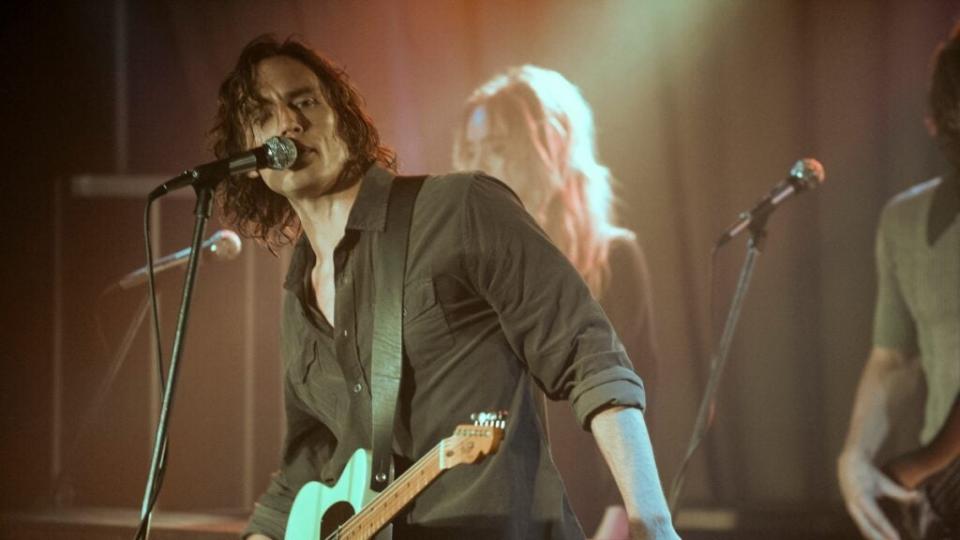
Sam [Claflin] was the really the hardest. We couldn’t find a Billy Dunne that checked all the boxes. Then we finally found Sam and we were so excited, but his performance for Blake and Tony was not good. [Laughs] He sang [Elton John’s] “Your Song,” which is so not rock ‘n’ roll. And then they said to him, “Why don’t you play [The Beatles’] ‘Come Together?’” They started playing it and he’s like, “Oh, I love Michael Jackson.” They were like, “We don’t know if this is gonna work.”
But he’s a classically trained British thespian, and so what he could do, which was amazing, was listen to Blake’s demo and imitate his voice perfectly. And that’s kind of how he learned to sing. He tried to sound like Blake to the point where we couldn’t tell the difference between them. And that’s really him and Riley on the album together, which still is mind boggling.
Taylor Jenkins Reid has said Fleetwood Mac was an inspiration for the story. Were they a model in your mind to some degree?
Certainly there’s no better example that I can think of for relationship turmoil filtered through songwriting than the “Rumours” album. I think that’s why it stands the test of time. I mean, obviously the music is amazing, but also the soap opera is endlessly fascinating. And that was a big inspiration, obviously, for this story. And for us in general, just it’s a wonderful era and a cool time. And there were two women in a rock band together, and they loved each other and they weren’t competitive. That was a really cool inspiration for us.
I think Daisy feels very Stevie [Nicks], and even more so than the novel, our Karen [Waterhouse] is very Christine McVie. But I think that’s where the similarities end. Billy is not Lindsey Buckingham. There’s much more Springsteen than Lindsay Buckingham. There’s some John Fogerty to him, some Tom Petty, a lot of influences. An amalgamation of all of the coolest bands and singer-songwriters of that time find its way into this story somehow.
I will say, by the end of “The River,” Riley is really doing some flat-out Stevie Nicks there.
It’s so true. But I hear Dusty Springfield in there also. I hear some Zeppelin. That song in particular I feel is an amazing kind of ’70s amalgam. There’s the Bill Withers riff in there, there’s a lot of cool things happening in that song. That was one of the last ones that we did — and I’ll be honest, I was not sure about it. Now it’s one of the most popular songs.
As a former rock journalist, I have one final bone to pick. The Rolling Stone reporter in the series is more of a villain than he is in the book. What’s the deal?
That’s true. [Actor Nick Pupo] does play it with more attitude and a little more antagonism. I think that was influenced a little bit by the [British] NME guys, Nick Kent and those guys. More so than the American guys at Rolling Stone or Creem, the U.K. journalists were harsh on everybody back then. But yeah, you’re right. That was definitely a little bit of a change from the novel. But that’s what I grew up reading. I’m a big Anglophile, and I remember reading the snarky articles about my favorite rock bands.
Read more from the Limited Series issue here.
